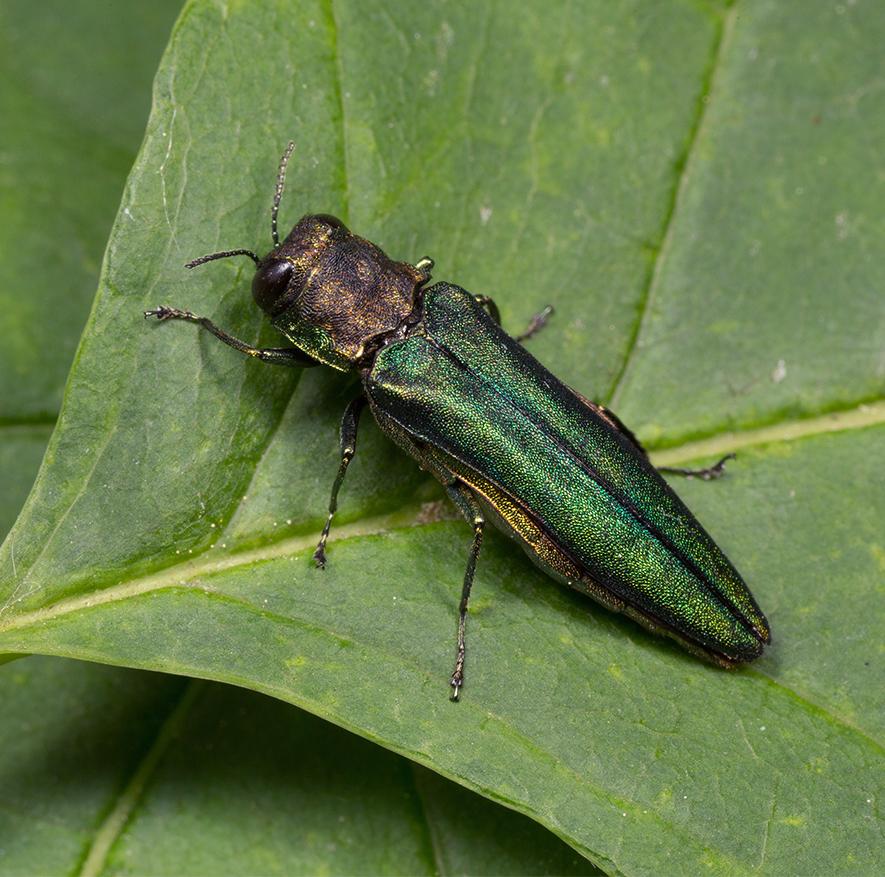Green ash (Fraxinus pennsylvanica) is a native tree that occurs over much of the eastern and central US and into Canada and Nova Scotia. It has several distinct characteristics that make it easily identifiable and popular as an urban tree. A member of the olive family (Oleacee), it is a medium-sized deciduous tree with male and female flowers occurring on separate trees (a dioecious species). The bark of mature trees is fissured into a diamond pattern making it easily identifiable. The leaves are pinnately compound (each leaf has several smaller leaflets). It was widely planted on city boulevards to replace the American elm because of its tolerance to urban conditions and relative freedom from pests. That all changed, however, in 2002.
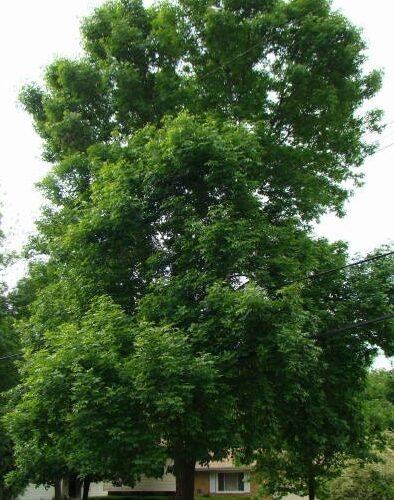
Emerald ash borer (EAB), Agrilus planipennis Fairmaire (Coleoptera: Buprestidae) is native to China, Korea, Taiwan, Japan, Russia, and Mongolia (Haack et al. 2002; Bray et al. 2007). The buprestids are flat headed borers: exit holes in trees are D-shaped and small, about ¼ inch in diameter. It was first discovered in North America in 2002 after urban ash trees near Detroit, MI were observed declining and dying at an unprecedented rate (Cappaert et al. 2005; Smitley et al. 2008). The beetle is currently found in 36 US states and 5 Canadian provinces.
EAB larvae mine under the bark, so early detection of infestation is difficult. Therefore, relying on outward signs and indicators is key for detecting infestations as early as possible. Look for reduced leaf size, yellowing leaves, and a thinning canopy.
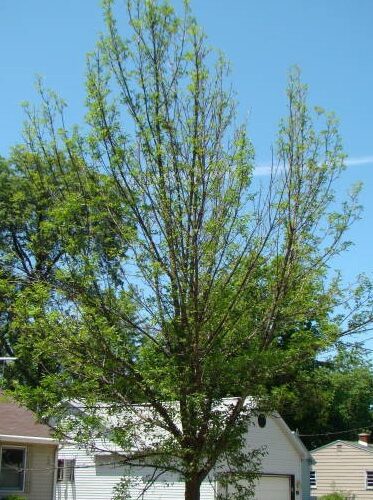
As infestation progresses, the larvae create serpentine mines that score the vascular tissues, including the sapwood. This disrupts the tree’s ability to transport water and nutrients from the roots to the crown.
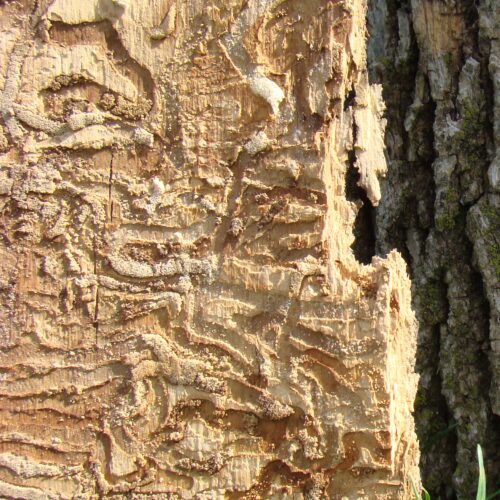
Further outward symptoms include canopy dieback and epicormic (adventitious) sprouting from the bark.
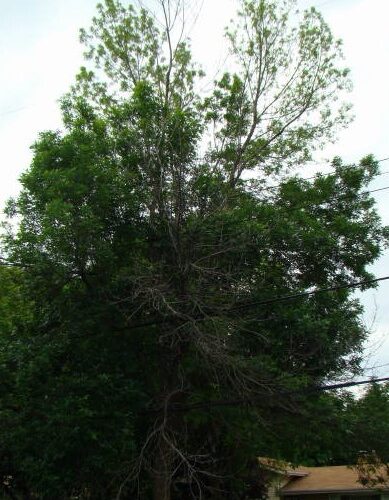
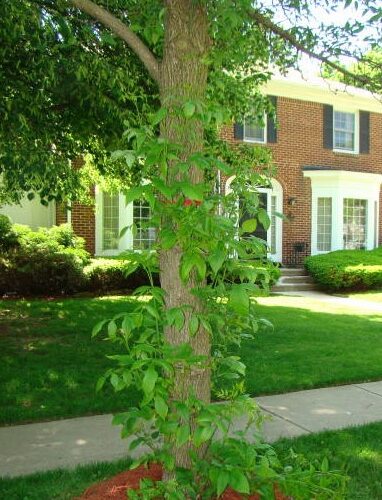
Untreated trees can succumb to infestation in as little as four years.
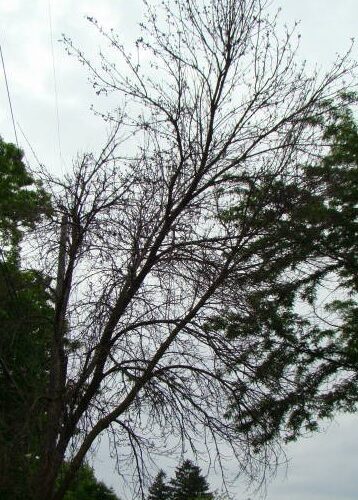
Unfortunately, research shows that EAB causes nearly 100% mortality of ash (Fraxinus spp.) trees in any growing environment unless they are treated with effective insecticides (Cappaert et al. 2005; Poland and McCullough 2006; Smitley et al. 2008). As EAB continues to spread, an increasing number of municipalities and private property owners face difficult decisions about whether to remove infected ash trees or invest in insecticide treatment of vulnerable trees. Trunk injections of imidacloprid or emamectin benzoate have proven efficacious against emerald ash borer when applied every one to two years, respectively. Private property owners and a number of municipalities have chosen to treat ash trees with systemic insecticide treatments because of the proven effectiveness of the tree injection treatments. During the past thirteen years, trunk injections of TREE-äge have dramatically changed the cost/benefit analysis for treating ash trees to protect them from EAB. This results in a lower annual cost than previous treatments, less injury to trees, and improved environmental safety because all of the insecticide is contained within the tree.
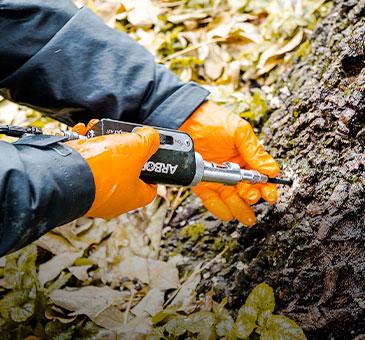
Join us next week when we talk about how to identify when you should treat for emerald ash borer.
~ Signing off for now, Joe
References
Bray, A.M., L.S. Bauer, R.A. Haack, T. Poland, and J.J. Smith. 2007. Invasion Genetics of Emerald Ash Borer (Agrilus planipennis Fairmaire) in North America. In: Proceedings from the Third Workshop on Genetics of Bark Beetles and Associated Microorganisms, B. Bentz, A. Cognato, and K. Raffa (Eds.).
Cappaert, D., D.G. McCullough, T.M. Poland, and N.W. Siegert. 2005. Emerald ash borer in North America: a research and regulatory challenge. American Entomologist 51:152–165
Haack, R.A., E. Jendek, H. Liu, K.R. Marchant, T.R. Petrice, T.M. Poland, and H. Ye. 2002. The emerald ash borer: a new exotic pest in North America. Newsletter of the Michigan Entomological Society 47:1–5.
Smitley, D., T. Davis, and E. Rebek. 2008. Progression of ash canopy thinning and dieback outward from the initial infestation of emerald ash borer (Coleoptera: Buprestidae) in Southeast Michigan. Journal of Economic Entomology 101:1643–1650.

